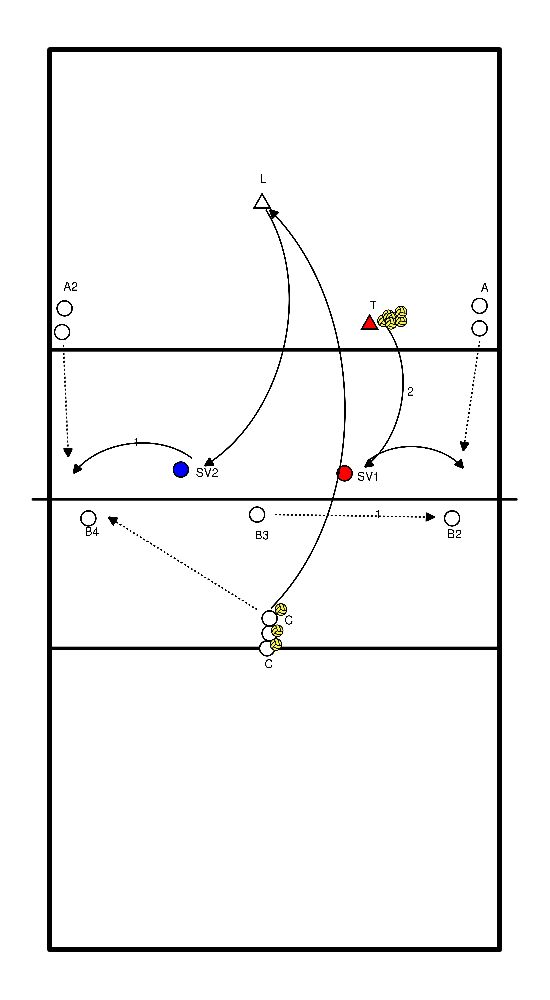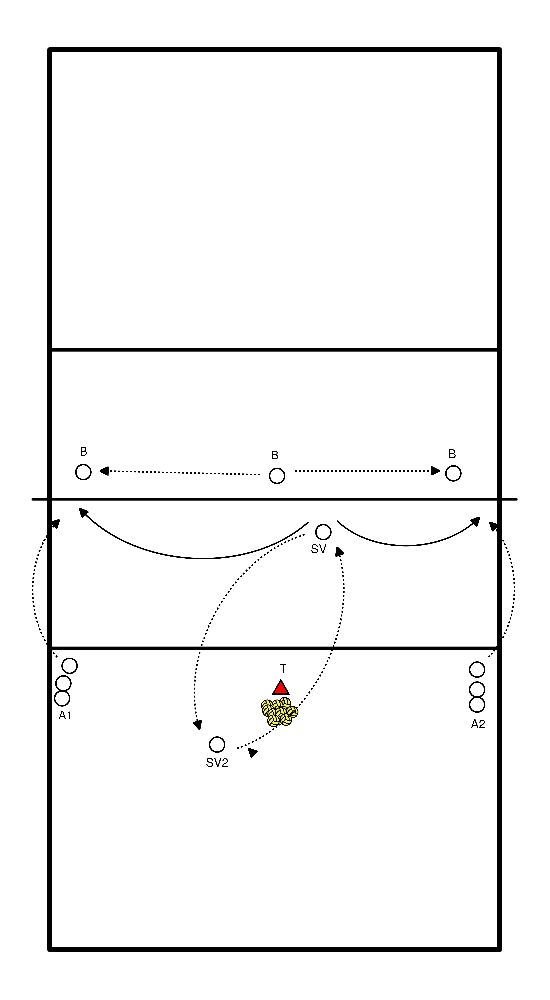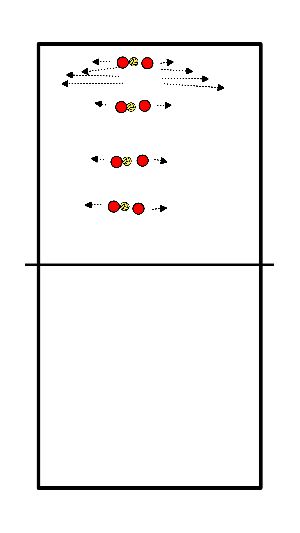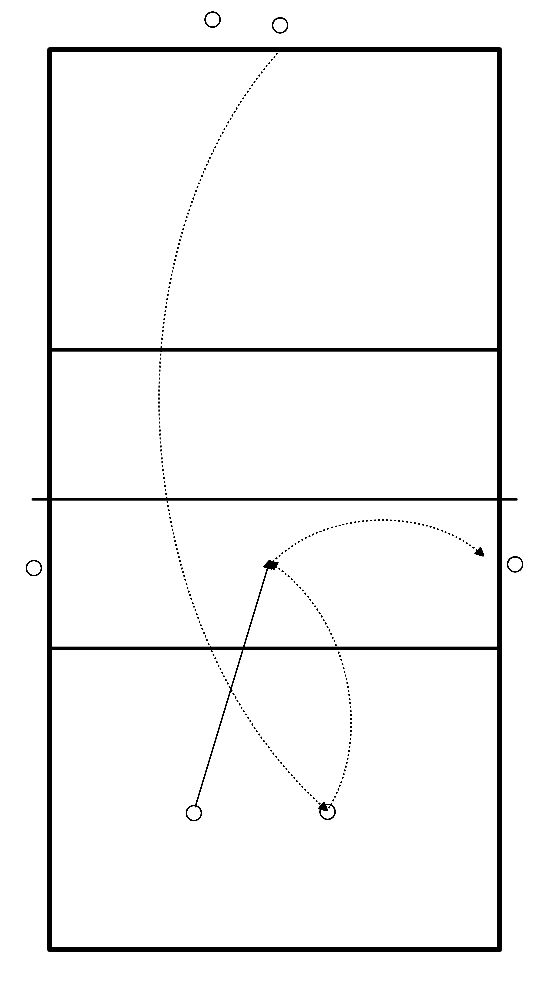Volleyball drills
Purpose: peripheral view.
- C plays the ball to L.
- L plays the ball to pos 3/2 --> SV2
- Meanwhile, B3 moves to pos 2 or 4. (draw. to 2)
- SV2 setup to the pos. where there is only one block.
- C goes blocking
- A attacks.
Meanwhile:
- T plays ball to SV1
- SV1 setup to attacker where there are two blocks.
Extension : field defense.

Goal of the exercise is, the playmaker must try to make sure that on the other side of the net a double block can not be formed.
- T plays the balls at a high pace towards pos. 3.
- SV walks in and gives set-up for -or backwards to fool the block.
- B tries to come to a drawbar block on attack.
- SV passes around T after set-up.
- SV1 & 2 switch positions after each set-up.
Expansion :
- Add field defense. (Liberos)
- B's play ball high back over to attacker passing towards pos 3/2
- Exercise starts again from pass attacker.

The goal of the core is, that the players can play the ball far overhead
- The players face each other in pairs and play overhead
- Hands well above the head, from the legs, body stretching and point towards the ball when releasing
- The players stand further and further apart from each other.
- Then we form two rows diagonally across the field and we play BH, chasing your ball

Organization:
2 persons to serve
2 persons in reception
1 attacker in position 4
1 attacker in position 2
- Serve to 1 of the 2 reception players
- 2nd person runs in and advances (to 2 or 4)
- With attack
- With attack to certain zone

In pairs
Long pass (10x):
- 2nd player on the 3-meter line
- Player at the net hitting the ball
- 2nd player shuffles backwards (7 meters)
- Hit by player at the net
- 2nd player passes
Short pass (10x)
- 2nd player at 7 meters
- Player at the net hitting the ball
- 2nd player sprints forward
- tip-ball by player at the net
- 2nd player passes
- Holding a plate with your hands at the 9 and 3 positions, this exercise builds the core and also develops upper body strength.
- Specific to volleyball, it helps the shoulder stay healthy and aids in the transfer of power from the core to the upper body.
- This exercise, done with 2 dumbbells, is good for glute strength, hamstrings and improving an athlete's vertical jump.
- Doing exercises like colored cones circles helps improve foot speed that’s incredibly important for a volleyball player.
- First of all, you should prepare randomly colored cones.
- You should also ask a coach (or friend) to assist you with this exercise.
- At the next stage, you need to place colored cones in the circle.
- Your goal is to create a circle that is 20 feet wide.
- Now, you need to stand in the center of the circle.
- The job of a coach (or friend) is to pick one of colored cones for you.
- So, you will need to approach to the appropriate cone as soon as possible and then return back to the circle’s center using a crossover step.
- It’s fair to say that volleyball is a very fast game.
- That means that a volleyball player should be able to move quickly to do great job on the court.
- Volleyball players should focus on increasing foot speed as well as core rotational speed.
- Now, it’s time for you to get familiar with some of the best volleyball exercises for explosive speed.
- Volleyball players should do high knee skips for a number of reasons.
- It’s important to know that doing this type of exercise has a positive impact on a volleyball player’s calves, hamstrings and hip flexors.
- If you do this type of exercise regularly then you will be able to improve your vertical jump, endurance and coordination over time.
- Oftentimes, a volleyball player needs to jump off one leg during the game.
- It’s worth noting that this type of jumping is done by both attackers and defensive volleyball players.
- That’s the reason why athletes should do single leg bound exercise regularly.
- Actually, this volleyball exercise has many great benefits.
- First and foremost, doing single leg bound helps volleyball players succeed in jumping off one leg.
- On the other hand, this exercise helps a volleyball player gain the confidence that he/she needs to do this type of jumping.
- The exercise also positively affects a volleyball player’s hip as well as hip flexor and quads.
- It’s crucial for volleyball players to do single leg bound exercise the right way.
- When jumping off one leg you should try to keep your opposite knee up as high as it’s possible.
- Doing squat jumps helps volleyball players strengthen calves, glutes, hips as well as quads.
- When squatting down volleyball players should try to keep hips parallel.
- Make sure that your knees are bent at 90 degrees.








